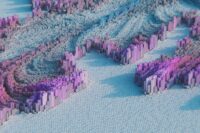- Home
- Articles
- Architectural Portfolio
- Architectral Presentation
- Inspirational Stories
- Architecture News
- Visualization
- BIM Industry
- Facade Design
- Parametric Design
- Career
- Landscape Architecture
- Construction
- Artificial Intelligence
- Sketching
- Design Softwares
- Diagrams
- Writing
- Architectural Tips
- Sustainability
- Courses
- Concept
- Technology
- History & Heritage
- Future of Architecture
- Guides & How-To
- Art & Culture
- Projects
- Interior Design
- Competitions
- Jobs
- Store
- Tools
- More
- Home
- Articles
- Architectural Portfolio
- Architectral Presentation
- Inspirational Stories
- Architecture News
- Visualization
- BIM Industry
- Facade Design
- Parametric Design
- Career
- Landscape Architecture
- Construction
- Artificial Intelligence
- Sketching
- Design Softwares
- Diagrams
- Writing
- Architectural Tips
- Sustainability
- Courses
- Concept
- Technology
- History & Heritage
- Future of Architecture
- Guides & How-To
- Art & Culture
- Projects
- Interior Design
- Competitions
- Jobs
- Store
- Tools
- More
GM WORLD: Envisioning a Center of Innovation for General Motors in Abandoned Structure

While some consider the empty or the unfinished parts of a building as disturbing, others feel they make an area even more interesting than the perfect picture. The notion of emptiness is a stimulus for the mind. It raises questions. Whether questions of an abandoned past or questions of a possible future, still, it does raise questions.
Resting in its incompletion, the skeleton of the building sits today as an ever-present ghost in the contemporary city of Amchit, Lebanon. Suspended in time, it gives the idea of “waiting”, suggesting potential change and movement.

Due to the financial and economic crisis that has left a strong impact on investments in Lebanon, the building, monolithic and robust in structure, is left unfinished.
However, since the future of any system is by its very nature unpredictable, what is radical about this structure is that it is merely the beginning of a process, one that is yet to be completed. It provides the abandonment of total design, the result of a step left in the absence of any set of human decision.

It is that idea that is so relevant today: the drawing is so open that we can read what we choose into it. With its concrete open framework, the building can be described as a fluid landscape of nothing but floor, ceiling, and columns: meaning no walls, no rooms, just a skeleton.
In fact, and to some extent, it resembles Le Corbusier’s “Maison Domino”, the first case in architectural history of a building designed as an open system, a platform for the users to complete as they see fit.

Therefore today, this building is a generic box that belongs to the city. Hungry to be filled, this box is but a neutral form in the structure’s search for identity, a call to “do something”, and an invitation to occupy and articulate its section. That is the perfect architectural symbol for an era obsessed with customization and participation.

Therefore, when this skeleton is injected with function, it becomes a prediction, and this prediction works best when it evolves gradually as a self-empowering system, one that has the right to determine the terms of its own existence.

In this prediction, General Motors transforms the skeleton into a Center of Innovation for its future technology, with most notably, its future technology of flying cars (trying to solve the current mobility issue of traffic in Lebanon). With functions ranging from a kinetic sculptures fountain at the public square to a dramatic ice-smoke catwalk Entrance, to a sneak-peak car window displaying the artifacts of the Future to rotating meeting capsules that alternate on an structural wheel, the proposal also includes a coworking space, artificial intelligence cells, digital capsules, a nano-technology research lab, a fabrication lab and 3d printing, all connected through industrial ramps that generate energy through movement on its recharging floorplates.

At the terrace level, a Lebanese food gastronomy restaurant is introduced with a space for a learning chef, supported by food delivery to the surrounding neighborhood through General Motors drone technology, and a glazed dome behind which General Motors can prototype its upcoming flying cars.

Author’s Bio
Gioia Sawaya is an architect based in Lebanon. She holds a B.Arch from NDU, Lebanon and a Masters in “Strategic Design of Spaces” from IE, Madrid. Gioia’s research methodology focuses on the role of theory in relation to the design process, examining the possibilities that challenge the rethinking of architecture and space in a novel way. Currently, her research interests look into the intersections between design and technology, going beyond the traditional boundaries into the technological shifts that are transforming the way people live today.
illustrarch is your daily dose of architecture. Leading community designed for all lovers of illustration and #drawing.
Submit your architectural projects
Follow these steps for submission your project. Submission FormLatest Posts
Renaatus Irumathi
Nestled on the eastern shores of Hulhumale’, Renaatus Irumathi Residence greets each...
White Khamovniki
The project is based on the idea of a building as a...
Millennium Horizon
The future cityscape Millennium Horizon is a groundbreaking architectural project envisioned for...
Wuto Space
A two-bedroom, one-living room apartment in the bustling heart of “Magic City”...



















































Leave a comment